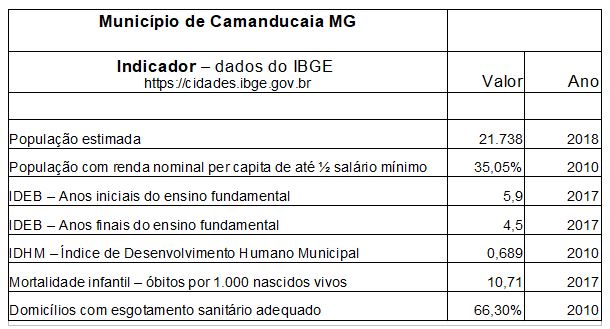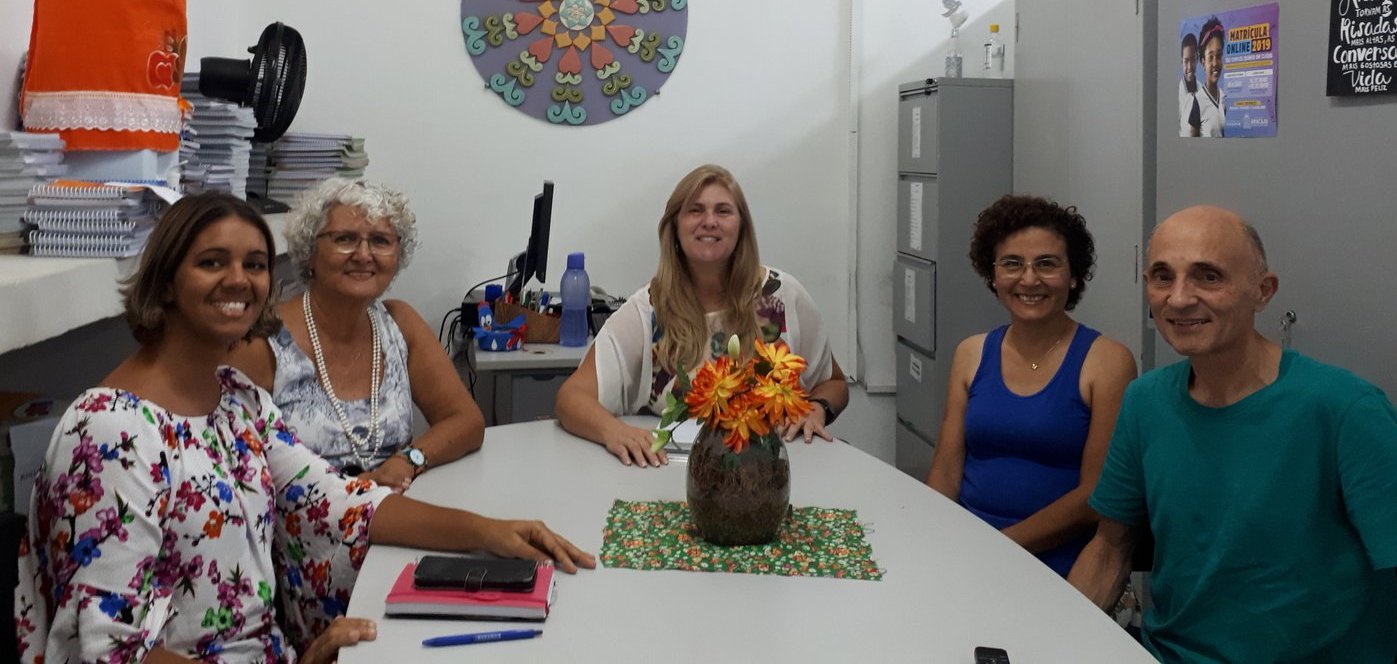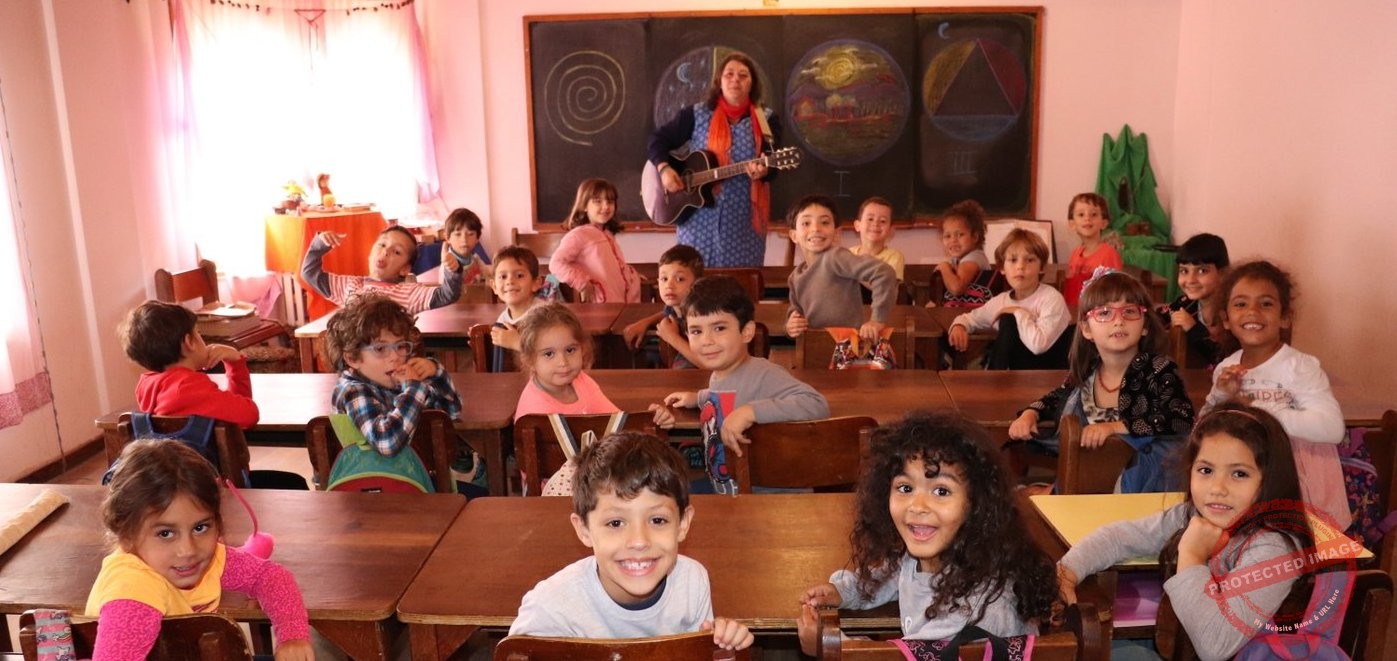[print-me target="body"]
The Waldorf Pedagogy
in public school
history – challenges – perspectives
by Rubens Salles and Rosineia Fonseca
Camanducaia MG
We were in Camanducaia visiting Escola Araucária twice in the annual pedagogical exhibitions, in 2017 and 2018. On these occasions we talked to several teachers about the school and recorded presentations of the pedagogical exhibitions, which are very beautiful and are available on our website, at this link.
Interviews were not recorded specifically for this research, as there was no availability of the school staff at the time of their realization. The information published below is the result of our observations, institutional videos, research, conversations with Rebecca Wagner Ciscato, who is a member of the Bom Jardim Pedagogical Association, and a historical account written by Evelyne Ruth Loewens. We are also making available two videos produced by the school, where there is a statement from its founder, Mr. Humbertus Adolf Loewens (in memoriam), from some teachers, former students, parents and with some images of the activities with the students.
highlights
The Escola Municipal Araucária has some very special characteristics, which make it different from the other Waldorf schools that we have visited.
1 – The Bom Jardim Pedagogical Association, which maintains the school, has managed to raise funds to build and maintain a beautiful school, which is nothing short of the best-structured Waldorf schools we have. does not provide and has managed to supplement the salaries of its teachers, who are all trained in Waldorf Pedagogy.
2 – As it is a rural municipal school and the only one within a radius of 23 kilometers, with teaching from kindergarten to the 9th grade of elementary school, it is very important for the city hall to maintain the agreement, otherwise there would be no other public school. to serve that population.
3 – As 9 of its 14 teachers are from the community, and all of them already have training in Waldorf Pedagogy, there is very little rotation of teachers.
4 – Working in the region for more than 40 years, he directly influenced the culture in the region, as practically everyone under the age of 50 was his students. Thus, today, it hardly suffers from the strangeness about pedagogy, which occurs in other partner schools, when parents enroll their children because they live close to the school, but without knowing anything about Waldorf pedagogy. On the contrary, there are several families who have moved to the region for the school.
5 – The Araucária School, being the only one in the region, is a great example of how a well-structured school with a humanized, emancipatory pedagogy focused on the integral development of the human being has the power to transform a community in cultural, social and economic.
Some data about the city

Address – Bom Jardim Neighborhood – Camanducaia MG
[email protected]
Facebook
Instagram
The Araucária Municipal School currently serves 160 students from kindergarten to the 9th grade of elementary school. The current teaching staff is made up of 14 teachers, all with a background in Waldorf pedagogy. Of these, nine are from the community, three migrated from other cities and one is a member of the founding family of the School.
Its history began with the couple Humbertus Adolf Loewens and Evelyne Ruth Loewens, who acquired a rural property in 1970, in the region known as the Bom Jardim neighborhood, which is located about 23 kilometers from the municipality of Camanducaia, by a dirt road, in the south of Minas Gerais. The construction of a house began there, and, when he went to make the first payment to the employees of the work, Mr. Humbertus discovered that no one knew how to sign the name. All were illiterate, as there was no school in the region. There was one, halfway to town, which was housed in a wattle and daub shack and had closed for lack of a teacher. He then decided to propose to the municipality that it could build a small school, if the government paid for a teacher.
Mr. Humbertus then undertook a pilgrimage through the intricacies of the Minas Gerais public administration, in order to achieve his goal. It started in 1971, talking to the director of the school in Camanducaia, who passed the question on to the Education Inspectorate in Cambuí, who passed the question on to the Education Department in Itajubá, who passed the question on to the State Department of Education in Belo Horizonte . After numerous comings and goings, on 08/07/1975, after they had already built the school, he obtained a permit for the school to operate but was not able to hire the teacher by the state. This incredible story of perseverance is told by him in detail in the video below.
Mr. Humbertus then proposed to his friends, all from São Paulo, to create an association and raise funds to pay a teacher, and the Bom Jardim Educational Association was created. At the time, a donation of one hectare of the land where the school stands today was obtained, which later with other donations and acquisitions increased to eleven hectares. The school started with about 40 students, because many adults in the region wanted to study too. Being a Waldorf school was a distant dream, but it was in the plans from the beginning, so much so that in the association's statutes it was already stated that, if the association was extinguished, its heritage would pass to the Waldorf Rudolf Steiner School, in São Paulo.
After a few years, the school became an agreement with the city of Camanducaia, and since then the teachers have been paid by the city, with temporary contracts that are renewed annually. We also saw this format in other partner schools. Below is the public notice published this year, which specifies the hiring of teachers trained in Waldorf Pedagogy.
However, during the early years it was difficult to keep a teacher to teach in such a remote location. In the early 1980s, a group of people linked to Waldorf Pedagogy began to meet to support the school, the teacher and the children, including on weekends, but the big change began in 1988, as Evelyne Loewens reports:
Evelyne – It was difficult to captivate a teacher who would effectively take over the work at the school for a full term. Finally, in 1988, Ursula Ropke, a professor with a degree in Physics and a postgraduate degree in Astronomy, decided to take over the School and moved with her family to the region. Since then, the school has been operating uninterruptedly, gradually increasing its number of students and teachers. With the arrival, in 1990, of Christiano Loewens, a former class teacher at Escola Waldorf Rudolf Steiner in São Paulo, the school received an impulse towards the Waldorf pedagogy, which has been implemented since then. In 1992, he joined the newly formed Christa Ropke school from the Waldorf Pedagogy Seminary in Stuttgart. Now, all teachers regularly attend refresher courses and Waldorf seminars. Without much fanfare, therefore, something unprecedented in Brazil happened at that time: Escola Araucária became the first public school with a Waldorf curriculum officially approved by the Education Department.
The Bom Jardim Educational Association has a municipal and state public utility, and makes a monthly contribution of around R$ 40,000.00 to the School's budget, to supplement salaries, continue teacher training and also purchase teaching materials. This investment is fundamental for the continuity of the Waldorf pedagogical work, as the salaries that the city government pays to the teachers are very low, and, as in other cities, the city government only provides the same materials that it provides to other schools and that do not serve all of them. the demands of this pedagogy. The association conducts fundraising and student adoption campaigns. You can learn about two of these campaigns in the links below:
Adopt a student from Araucaria School – pdf
At Escola Araucária, teachers have all the conditions to fully carry out Waldorf Pedagogy. In addition to the excellent structure of the classrooms, there is a spacious dining room with a kitchen, a room for handicrafts, a carpentry shop, a bakery, a library, a secretary and a vegetable garden, in addition to three housing for teachers. Everything was built with resources raised by the association. Compared to the large private community schools, there is only one Eurythmy teacher missing. All other aspects and activities inherent to the pedagogy are carried out, and its parties, bazaars and cultural presentations are very popular, transforming the school into the cultural center of the neighborhood.
From a region where the vast majority were illiterate, and where when children went to school they only attended the fourth grade, today, in addition to zero illiteracy, young people leave who have already followed careers such as Medicine, Law, Nursing, Pedagogy, Arts Scenics, Music, Architecture, Animal Science, Agronomy, Administration, Tourism and Hospitality among other professions.
Community life in the neighborhood revolves around the school. Evelyne considers that “one of the most important aspects, however, is that thanks to all this, young people stopped migrating to cities, where the sad fate of so many was to end up in the slums”. New initiatives are already emerging on the part of the residents, many of them former students of the school, who are no longer content to continue with the meager subsistence farming practiced by their parents.
According to Rebecca Ciscato, the emergence of the school was fundamental for the socioeconomic development of the region. With it, inns, shops, cultural and sports activities emerged in its surroundings, which to this day do not exist in other rural neighborhoods of the municipality. Its impact can be recognized in several ways: on the schooling of the community, on its employability, on housing conditions and on its community and political action.







